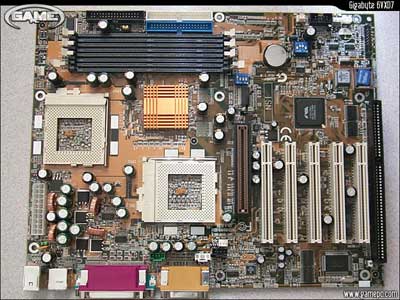De mannen van GamePC hebben een review geschreven over de Gigabyte 6VXD7, een dual FC-PGA plankje gebaseerd op de 133A chipset. Deze plank is evenals de MSI 694D Pro of Tyan Tiger 133 niet de nieuwe BP6 (met een beetje geluk wordt dat de Abit VP6). Het tweaken aka overclocken gaat op deze plank absoluut niet fijn: het instellen van de FSB snelheid moet gebeuren met jumpers en dipswitches en er zijn maar 6 FSB snelheden beschikbaar. Qua performance is deze plank heel vergelijkbaar met de MSI 694D Pro. Een redelijke prestatie dus, en dat samen met een prima stabiliteit maakt deze plank prima geschikt om je 3D Studio Max experience een beetje te enhancen ![]() :
:
For a simple SMP workstation, some graphic editing, some 2D, some 3D, and some gaming on the side, this board looks to be just about perfect. In Windows-based SMP applications, the board does act quite stable and delivers a nice performance boost.
For servers, VIA still doesn't have the unbreakable confidence that Intel has gained, and it will take VIA a long time to earn people's trust. While the board remained stable for long-periods of time running Prime95 (simulating 100% CPU utilization on both CPU's), we still can't give the big thumbs up for this category. For one, there were some small memory issues that arose with the board (very important for servers), and it simply didn't give us the "feel" of a rock-solid machine, like dual-processor 440BX boards gave us. Plus, VIA has had a long history of instability with certain hardware, so we're weary of what problems could lurk in the future.
For hardcore gamers, it's simply not worth it go to a multiprocessor configuration at this time and place. Quake III is the only major game that supports multiprocessor rigs right now, and this board can't even run it correctly in SMP mode. Do yourself a favor, save a few bucks, and buy a higher-clocked single processor and another stick of RAM, which will do you loads more good than going to SMP will.
 |
